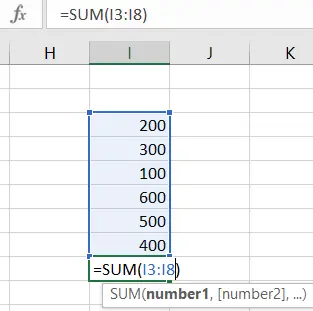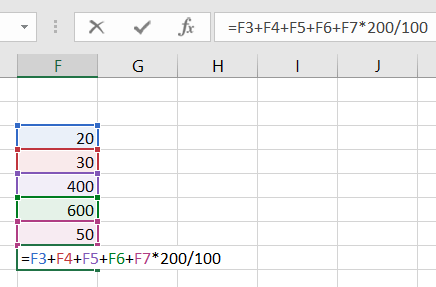A function is a pre-defined operation, developed by Microsoft Corporation in an Excel application. The formula is similar to a simple calculation, which is defined according to the user’s needs and desires.
Table of Contents

7 Differences Between Functions and formulas in Excel:
We explained more than 5 differences between functions and formulas in excel in a tabular form. A thorough reading of the differences given below will give you a better understanding.
| S. No. | Function | Formula |
|---|---|---|
| 1. | It is a pre-defined (built-in) operation used for certain calculations in a certain order. | It is a user-defined operation used for manual calculation in any order. |
| 2. | functions are used to perform complex calculations that cannot be done manually by the user. | Formulas are used to perform simple calculations that can be done manually by the user. |
| 3. | Functions are expressions that operate on small and large values in a range of cells. | The formula is used for quick tasks such as finding the sum, count, average, minimum, maximum, etc. values in a range of cells. |
| 4. | A function can be a formula. | Formula can’t be a function. |
| A function starts with an equal sign. | You must begin the formula with an equal sign. | |
| 5. | Eg: =sum(b2:d4). | Eg: =20+60+40/60 (or), =sum(b2:d4)*256%. |
| 6. | Functions can be updated by the developer. | Formulas are like general calculations, so you can use them as per your requirement. |
| 7. | You can either combine formulas in the functions or functions in the formulas for calculations. But it is also treated as a formula (Not a function). | You can either combine formulas in the functions or functions in the formulas for calculations and it is treated as a formula. |
Examples:

Excel allows you to use functions and/or formulas to manipulate specific data as desired by the user as an example in the screenshot below.
A list of Examples for Functions in Functions vs Formulas:
Sum, Average, Count, Counta, Countblank, Sumif, Sumifs, Sumproduct, Countif, Countifs, Averageif, Averageifs, Datedif, Vlookup, Hlookup, Xlookup, PMT, PPMT, PMT, Index, Match, Concatenate, If, Time, Date, Text, Yield, XMATCH, Subtotal, and so on.
Function:
How to use functions in excel:
To use any function in Excel, first, you may start with an equal sign, or directly use the insert function command
After that, you should follow the instruction provided in the syntax
The syntax is showing starts when we complete typing the function name after an equal sign, or after inserting the function using the insert function option.
A list of Examples for Formulae in the Difference Between Functions and Formulas in Excel:
=a1+b1+c1+f5+ss3+hj+s56
=sum(a2:h12)*16/3
=15554*6+455/3
=max(d23:h12)/3
=54*545/5
=25+65+89-155*58/555
=5624/3
=200+600+600
=100-652
=458*6.
Formula:
A Combination Of Function/s and Formula/s:
A combination of both Formulas and functions can be useful in complex situations such as calculating mortgage payments, solving engineering or mathematical problems, and creating financial models.
What is a function in Excel?
The function is a pre-defined operation that means it already exists and was developed by Microsoft Corporation as a part of an Excel Application.
What is a formula in Excel?
Whereas Formula is a user-defined operation which means it is like a general calculation done by the wish of the user.
How do Functions differ from Formulas?
Functions are pre-built tools with specific purposes, while formulas are constructed by users using functions and other elements to suit their unique calculation needs.
Can you give an example of a Function?
The SUM function adds up a range of numbers, like =SUM(A1:A10) to sum the values in cells A1 to A10.
Can I modify Functions?
No, Functions are fixed in their operations and can’t be altered. However, you can customize their inputs.
How do I use Functions and Formulas together?
You can incorporate functions within your formulas to make complex calculations easier, like using the SUM function within a formula to calculate a percentage of a sum.
What’s the advantage of using Functions?
Functions simplify calculations, reduce errors, and offer standardized solutions to common tasks without requiring manual input.


